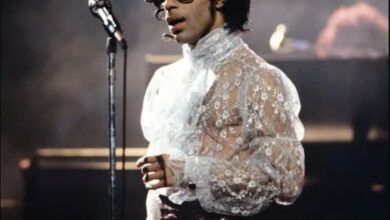13 Years Later: The Shocking Details I Missed in Deep Blue Sea—Prepare to Be Mind-Blown!
OPINION: This article may contain commentary which reflects the author's opinion.
It’s hard to believe, but it’s been 13 years since Deep Blue Sea made a splash on the big screen. Like many fans, I’ve watched this shark-infested thriller more times than I can count. But recently, I stumbled upon some mind-blowing details I’d missed all these years. As a journalist, it’s my duty to share these jaw-dropping insights—because you won’t believe what’s lurking beneath the surface of this cult classic.
1. The Symbolism Behind the Sharks
We all know the genetically modified sharks are the villains of the film, but did you ever stop to think about what they really represent? These predators symbolize human overreach, a modern-day Frankenstein scenario where scientists play God. The sharks’ hyper-intelligence is not just a plot device; it’s a metaphor for the dangers of tampering with nature. Even the characters’ names hint at this, with Dr. Susan McAlester being a thinly veiled nod to the mythological hubris of Icarus flying too close to the sun.
2. A Hidden Cameo from Director Renny Harlin
You might think you’ve seen Deep Blue Sea enough times to catch all the cameos, but did you know that director Renny Harlin has a sneaky appearance in the film? During one of the pivotal scenes in the research facility, Harlin can be spotted briefly in the background as a scientist, blending seamlessly with the chaos. This blink-and-you-miss-it moment is a cheeky Easter egg that only the most eagle-eyed fans would catch.
3. LL Cool J’s Parrot: A Deeper Meaning
Who could forget LL Cool J’s lovable and surprisingly insightful pet parrot, Bird? While it might seem like comic relief, this feathery companion is more than just a sidekick. The parrot represents survival instincts and intuition—the qualities that help LL Cool J’s character, Preacher, outsmart the sharks in the end. It’s also no coincidence that the bird speaks—an intentional contrast to the voiceless but deadly sharks. It’s as if the parrot is a guardian angel, providing crucial moments of levity in a film steeped in tension.
4. The Color Palette Foreshadows Key Deaths
This is where things get truly mind-blowing. The film’s color palette subtly foreshadows the characters’ fates. The brilliant blue hues dominating the movie give it a cold, calculating feel, but watch carefully, and you’ll notice that certain characters are bathed in warmer tones before their demise. Dr. Whitlock, for instance, is bathed in a golden light right before he’s snatched by the shark, as if signaling his imminent departure from the world of the living. It’s a visual cue that many of us missed on the first (or 10th) viewing!
5. Samuel L. Jackson’s Death Scene Was Inspired by Real Life
One of the most shocking scenes in the movie is when Samuel L. Jackson’s character, Russell Franklin, delivers a rousing speech only to be unceremoniously devoured mid-sentence. What you might not know is that this scene was inspired by a real-life event! The writers reportedly drew from a harrowing shark encounter off the coast of California where a diver was attacked just as he was signaling for help. This real-life moment gave the scene an extra layer of authenticity, making Jackson’s death all the more unforgettable.
6. A Nod to Classic Horror
Upon rewatching, it’s clear that Deep Blue Sea pays homage to iconic horror films of the past. From the tight, claustrophobic shots reminiscent of Jaws to the heart-stopping suspense in narrow corridors that echo Alien, the movie masterfully combines elements of creature features and psychological thrillers. Harlin’s vision wasn’t just to make a shark movie, but to create a genre-blending thriller that tips its hat to the greats.
7. A Sneaky Connection to Jurassic Park
You might think Deep Blue Sea and Jurassic Park are worlds apart, but there’s a subtle connection between the two. Both films explore the consequences of genetic manipulation, with corporate greed as the underlying motivator. In fact, there’s a moment when Dr. McAlester refers to “pushing the boundaries of science,” echoing Dr. Ian Malcolm’s famous line from Jurassic Park: “Your scientists were so preoccupied with whether or not they could, they didn’t stop to think if they should.” Coincidence? I think not.
8. The Ending You Didn’t See Coming
Finally, Deep Blue Sea originally had a much darker ending, where the surviving characters didn’t make it out alive. Harlin changed it after test screenings showed audiences preferred a more hopeful conclusion. But the film’s ultimate message still stands: survival comes at a cost, and sometimes the real monsters are the ones we create ourselves.
As I sit here, 13 years later, these revelations still have my mind spinning. How could I have missed such rich symbolism, hidden nods, and cinematic layers? If you’re a fan of Deep Blue Sea like me, it’s worth diving back into the depths for another watch—you might just uncover something new. Trust me, it’ll blow your mind all over again.



